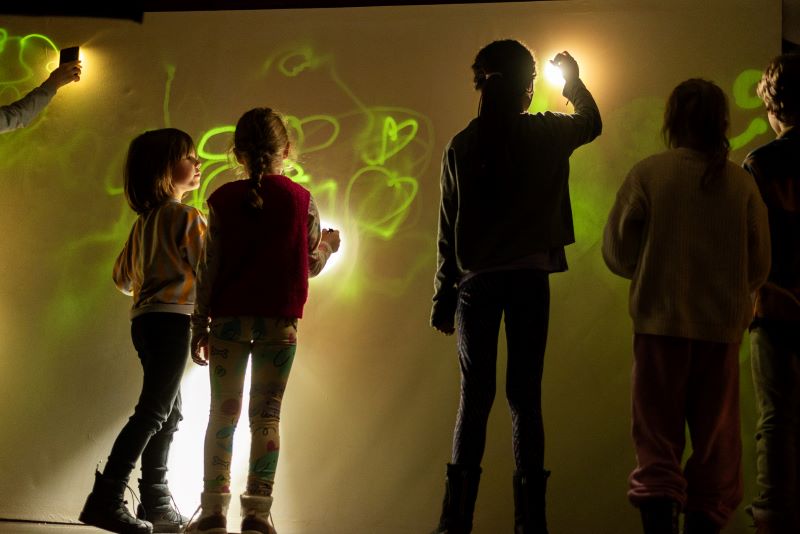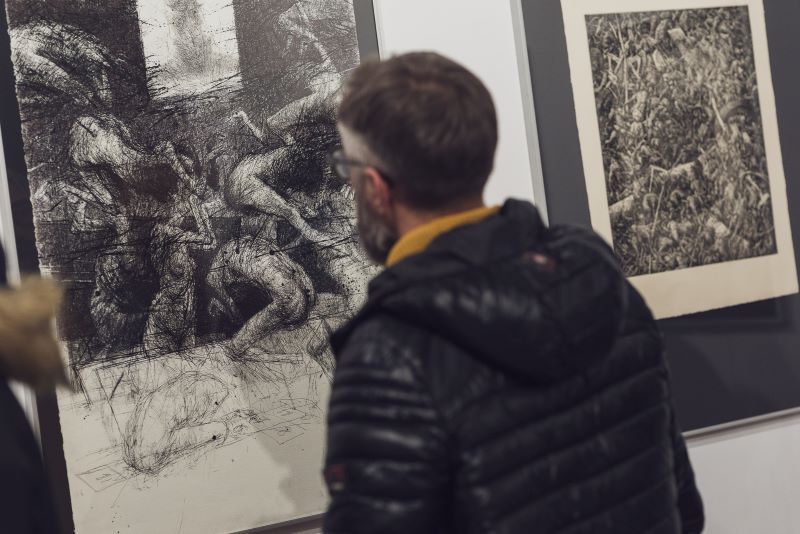Each of 50 Weeks in the City of Science features a text about selected research in a given subject area carried out by scientists from the universities forming the Academic Consortium Katowice City of Science. The texts we publish give insight into the diversity of issues scientists deal with and show the research potential that is dormant in the universities of the consortium.
| Agnieszka Kliks-Pudlik |
Drawing Week (third from the 50 weeks in the City of Science) was dedicated to a medium that permeates all spheres of human activity from an early age. Lecturers from the Academy of Fine Arts and Design in Katowice emphasise the fact that drawing combines art with practical use.
‘You could say that drawing oscillates between poetry and prose. On the one hand, it differs from painting in that painting is quite difficult to imagine outside the field of art. Whereas drawing – absolutely. After all, it is one of the first and most natural cognitive tools: a way to express feelings and emotions and record images produced by our minds. We take advantage of drawing in everyday communication e.g. as infographics, diagrams, and mathematical equations. Of course, it is also present ‘in high places’ – we can mention many great contemporary artists who draw or use it as a starting point for their practice in other media’, says Prof. Grzegorz Hańderek, Rector of the Academy of Fine Arts and Design in Katowice and one of the curators of the Drawing Week.
Children painting with light during workshops as part of Drawing Week | Photo by Monika Befeltowska
Drawing – as an academic field – has been recently undergoing dynamic changes. Among other things, the development of new technologies and their application in the creative process plays a major role in this.
‘Until recently, academia considered drawing a craft developed based on the study of reality. This is changing now – drawing is becoming a tool for exercising one’s mindfulness, it can be a therapeutic tool, and it can also go beyond the visual arts, as it is possible to draw with, for example, a sound wave or a performative practice. The more we step beyond the established solutions, the more possibilities we have. Drawing has become popular again. And perhaps it will always be a primary tool due to its openness to change’ says Prof. Grzegorz Hańderek.
Educators from the Academy of Fine Arts and Design in Katowice work on drawings at the Drawing Studio. The curator of Drawing Week pays particular attention to the aspect of action: referring to linguistic forms, drawing can be defined both as a noun, i.e. a work, something finished, but also as a verb – action.
Action is also a form of interacting with the recipient: ‘Drawing in and of itself is something inanimate, not alive. The artist must, therefore, include in it a key for the recipient to read and understand. This is the essence of all fine arts, to breathe life into the piece and serve to transfer energy from its creator to the recipient’ explains Prof. Bogdan Topor, Head of the Drawing Studio at the Academy of Fine Arts and Design.
Drawing is thus, on the one hand, a research tool in the creative process and, on the other, an art medium in its own right.
‘In our theoretical reflections on drawing, we often emphasise that it is such a holistic way of seeing – how a person shapes their thought, a form of self-expression and a visualisation of it all. Drawing allows us to organise our thoughts and select only what is the most important’ says Prof. Bogdan Topor.
The artist adds that children draw most naturally and intuitively: ‘With them, the course of externalising thoughts and putting them on paper is clear, pure, unadulterated. Children do not calculate which working method is best and do not choose from the means of expression or workshop known to them – they take what is at hand and create.
‘You could say that drawing oscillates between poetry and prose’, says Prof. G. Hańderek, Drawing Week curator
Half a century of tradition
A place of strong traditions and continuous evolution of drawing as a tool and medium: from traditional printmaking, through design to performance – is the Institute of Fine Arts at the Faculty of Arts and Educational Science of the University of Silesia in Cieszyn, which has been operating for 50 years.
In the visual and design arts, drawing is often the first tool used to jot down ideas, to save them from oblivion, and the pencil or electronic stylus is the basic armament of every creator: designer, sculptor, architect, filmmaker. A drawing can be a sketch, a foreshadowing of something more complex, or an autonomous image, more or less permanent: made with a pen on paper, carved with a chisel in stone, a stick in the sand, tattooed on human skin, outlined with a finger on the back, light in the air, the movement of the body on stage, arranged from objects. Drawing is a broad term’, says Stefan Lechwar, PhD, DLitt, Associate Professor, Director of the Institute of Fine Arts of the Faculty of Arts and Educational Science.
More information about the Institute’s activity can be found on the website of the Institute of Fine Arts.
An article summarising Drawing Week and a photo report are available on the event’s website.







